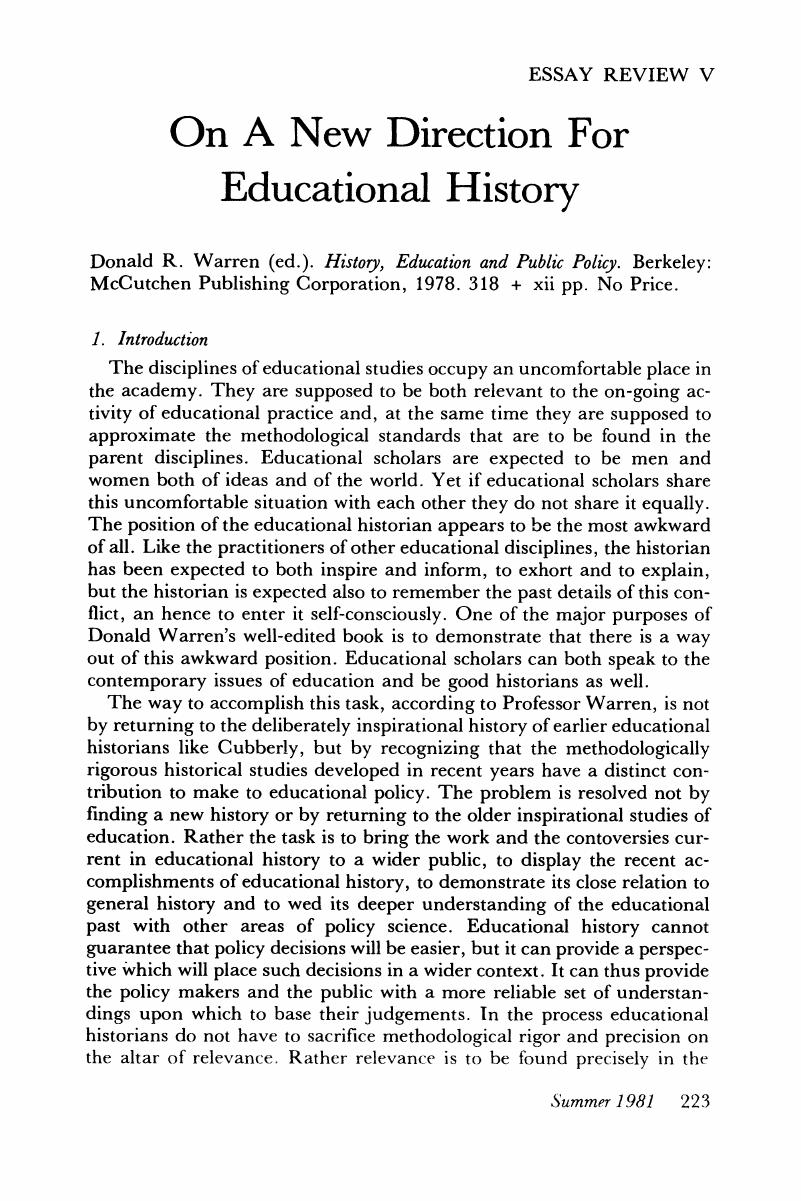No CrossRef data available.
Article contents
On A New Direction For Educational History
Published online by Cambridge University Press: 24 February 2017
Abstract

- Type
- Essay Review V
- Information
- Copyright
- Copyright © 1981 by History of Education Society
References
Notes
1. This comparison should not be taken to suggest that questions of evidence and facts are unimportant. Anderson, for example, raises serious questions about the view that the training model of education was but a compromise that the “philanthropists” had to carve out with Southern Whites. He relates a case in which the model of the philanthropists was opposed in favor of one with a larger academic component by influential members of the White community. (See Anderson, James D., “Philanthropy in the Shaping of Black Industrial Education Schools: The Fort Valley Case 1902–1938”, Review Journal of Philosophy and Social Science, Vol. III, No. 2 (Winter 1978): 192–193. It should also be mentioned that in addition to the development of a shadow labor force, Anderson's later work stresses the goal of simple agricultural and domestic work as one which the industrialists also advanced. (See Anderson, James D., “Northern Foundations and the Shaping of Southern Black Rural Education, 1902–1935”, History of Education Quarterly, (Winter 1978.) Google Scholar




